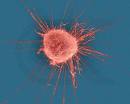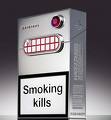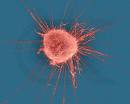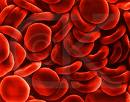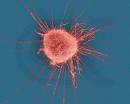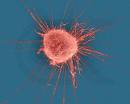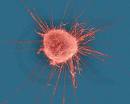
New York: Cancer deaths continue to increase, with the American Cancer Society reporting 12 million new cases of malignancy diagnosed worldwide in 2007, with 7.6 million people dying from the disease.
The report, Global Cancer Facts & Figures, finds that 5.4 million of those cancers and 2.9 million deaths are in more affluent, developed nations, while 6.7 million new cancer cases and 4.7 million deaths hit people in developing countries.
“The point of the report is to promote cancer control worldwide, and increase awareness worldwide,” said report co-author Dr. Ahmedin Jemal, director of the society’s Cancer Occurrence Office.
The number of cancers and cancer deaths around the world is on the rise, Jemal said, mostly due to an aging population. “There is increasing life expectancy, and cancer occurs more frequently in older age groups,” he noted.
Lifestyle may be another reason for the rise in malignancies in developing countries, Jemal said, as people adopt Western behaviors such as smoking, high-fat diets and less physical activity.
The best way to stem the increasing number of cancer cases and deaths is prevention, especially in poorer countries, the expert said. In many developing nations, the health-care infrastructure simply isn’t there to offer cancer screening and treatment for most people, Jemal added.
In developed countries, the most common cancers among men are prostate, lung and colorectal cancer. Among women, the most common cancers are breast, colorectal and lung cancer, according to the report.
However, in developing countries the three most common cancers among men are lung, stomach and liver, and among women, breast, cervix uteri and stomach.
Worldwide, some 15 percent of all cancers are thought to be related to infections, including hepatitis (liver cancer) and human papilloma virus (cervical cancer). But the incidence of infection-related cancers remains three times higher in developing countries compared with developed countries (26 percent vs. 8 percent), according to the report.
In addition, cancer survival rates in many developing countries are far below those in developed countries. This is mostly due to the lack of early detection and treatment services. For example, in North America five-year childhood cancer survival rates are about 75 percent compared with three-year survival rates of 48 percent to 62 percent in Central America, the report notes. The report estimates that 60 percent of the world’s children who develop cancer have little or no access to treatment.
The report also includes a section on the toll tobacco use takes around the world. In 2000, some 5 million people worldwide died from tobacco use. Of these, about 30 percent (1.42 million) died from cancer — 850,000 from lung cancer alone.
Jemal believes smoking is a key culprit.
“Smoking prevalence is decreasing in developed countries. So, as tobacco companies are losing market in developed countries they are trying to expand their market in developing countries,” he said.
In China alone, more than 350 million people smoke. “That’s more than the entire population of the United States,” Jemal said. “If these current patterns continue, there will be 2 billion smokers worldwide by the year 2030, half of whom will die of smoking-related diseases if they do not quit,” he added.
In the 20th century, tobacco use caused about 100 million deaths around the world. In this century, that figure is expected to rise to over 1 billion people. Most of these will occur in developing countries.
One expert agreed that many cancer deaths can be avoided through lifestyle changes.
“What is most provocative here is not the total global burden of suffering and death cancer causes, dramatic though that may be, but the variations in cancer occurrence around the world, and the insights provided about how much of the cancer burden need not occur at all,” said Dr. David Katz, director of the Prevention Research Center at Yale University School of Medicine.
In developing countries, cancer of the uterine cervix is a leading cause of death in women, Katz noted.
“Yet this infection-related cancer is now preventable by vaccine, and long treatable when detected early using the Pap smear. As a result, death from cervical cancer in developed countries is dramatically lower. Its toll in the developing world is testimony to missed opportunities to apply our resources effectively, and equitably,” he said.
Cancer of the liver, often related to hepatitis infection, is a leading cause of death in developing countries, but not so in developed countries. “Again, an infection preventable with vaccine is causing death because of inequities in the distribution and use of existing resources,” Katz said.
Prostate and colon cancers are more common in wealthier countries, where they are likely related to poor diet and obesity, Katz said. “Unnecessary suffering and death are occurring in affluent countries due to dietary excesses,” he said.
Katz also noted that tobacco-related cancer is largely preventable. “The toll of tobacco-related disease, including lung cancer, is an appalling example of a global willingness to tolerate preventable suffering and death for the sake of profit,” he said.
These data show both developed and developing countries how to move toward the lower rates of specific cancers, Katz said.
“It will be a tragic failure for public health if instead of applying these lessons developed countries continue to export tobacco and dietary transgressions so that the developing world adds to its current cancer burden ours as well,” he said.






